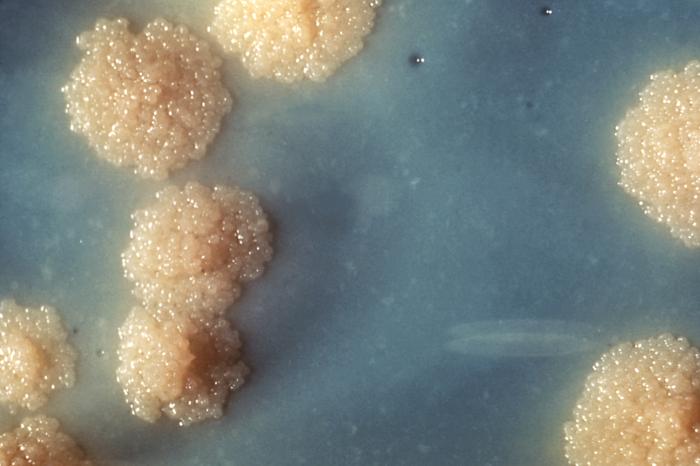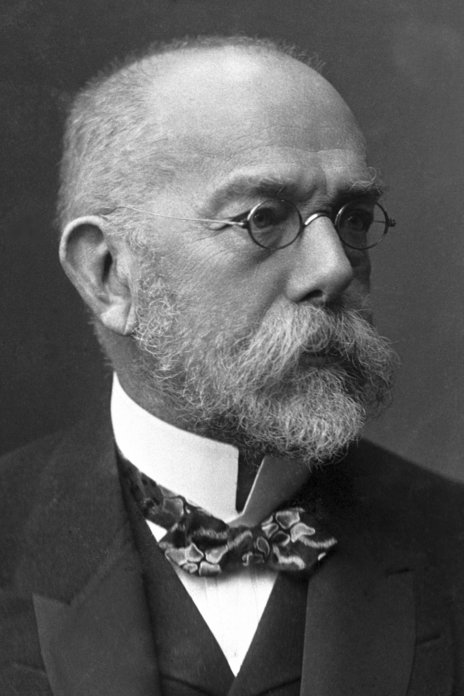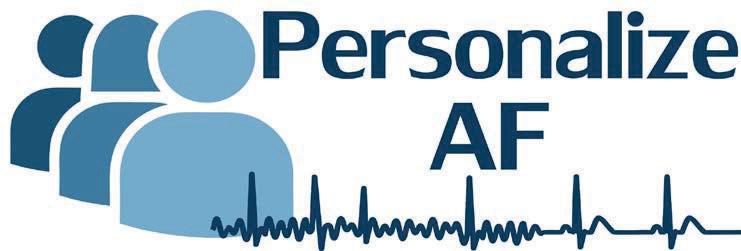Scientific Cooperation:
Too many cooks don't spoil the broth

This time we are starting way back, 9 thousand years to be precise; to an untimely death of a mother and her infant in the eastern mediterranean, – taken by a cursed consumption.
Millenia later, archeaologists discover their fossilized remains and record the earliest finding of M. tuberculosis, the bacterium causing tuberculosis, the reason for their passing.
Tuberculosis has been an unrelenting, deathly companion of humanity, from the time of our earliest settlements to still even today. During the 18th century in Europe tuberculosis was the cause of 25% of death. That is of all deaths, including old age, including other diseases. No human was unaffected by this, if the ‘white plague’ did not take you, consumption would reach out to a loved one. In case of the remains of the mother and infant it took both.
At the end of the 19th century, finally, relief was in sight. Robert Koch, a renowned German scientist, discovered the M. tuberculosis causing the disease. For his tuberculosis related discoveries he would later receive the Nobel prize in 1905. But only discovery of the cause would not be enough, the dying would need to stop.
A cure would need to be found.
Which will take us on a trip into scientific cooperation and its value. But first back to our search for a cure:
Koch was a national hero and internationally renowned scientist when he discovered the bacillus. A genial man, an ambitious man, a prideful man. After his discovery he set out to bring an end to the bane that this bacterium was and develop a vaccine. After years of work, personal work, (Koch himself would experiment on lab animals, administer vaccine candidates to patients personally), he found the solution. He, himself, alone, presented tuberkulin in 1890, a vaccine he claimed to be able to prevent or cure tuberculosis. The public was ecstatic, tuberkulin, of which only Koch knew the recipe, was set to wipe out the white plague.
Tuberkulin turned out to not cure any tuberculosis.
It did not kill the bacterium, it even activated tuberculosis bacteria in the body that had not yet turned aggressive. Koch was wrong, public sentiment turned and in 1891 he had to reveal his secret recipe. He himself did not know what was exactly contained in tuberkulin, it was an unknown extract of dead tuberculosis cells. Although later tuberkulin would be found to be useful to diagnose tuberculosis (it would cause a visible skin color change in people having the infection), Kochs reputation was tarnished. Overall Kochs achievements are a gift to the world and his discoveries were undoubtedly grand . Not without reason was he still awarded the Nobel prize (15 years after his tuberculosis “cure”). But still, the man who had to find the cure himself, had no one to blame but himself.
Years later a French veterinarian and a French microbiologists, Camille Guérin and Albert Calmette, started culturing tuberculosis bacteria themselves. Culturing them over years together, moving from one institute to another. After 13 years the bacteria they had worked on became less virulent, less dangerous to humans, safe enough to become a vaccine, the Bacillus Calmette–Guérin (BCG) vaccine, the first true tuberculosis vaccine. Although tuberculosis still remains a terrible disease, still killing humans even to this day, the BCG vaccine was one first important step, especially protecting infants from deadly tuberculosis related meningitis, .
So what am I saying? Two scientists better than one? – …Yes? But not only. My two main points are first about the scientists themselves and second the science they are conducting:

1st: Scientific pursuit is noble, and many scientists themselves, rightfully so, see their work as contributing to the greater good of humanity. They sacrifice for it, forego high salaries for their research, spend years in uncertainty if their results are worthwhile. One reward for this can be recognition. Recognition from other scientists, from the public, from history. How many scientists, physicians have put their name on their discoveries, for all world to see their achievement. How often do we equate scientific success with being awarded the recognition of a Nobel price.
Often science is about discoveries. Science is about what you discover. What you discover. One of the haunting nightmares of any scientist is to see the topic that you have been researching be published before you by another. Someone else getting there before you. Your research did not disappear, your recognition just did. So is it not easy to understand that researchers become protective? That they start to feel that other scientists are competition and that its only you, who will find the solution, just you, just like Robert Koch.
So would have Kochs research been better if there was another pair of eyes, as with Calmette and Guerin? Someone asking questions, someone challenging your belief in your findings, someone sharing the promised renown? Or just someone to help with culturing deadly bacteria for 13 years. Maybe.
2nd: Science is complicated. (Only controversial statements in this blog) And science has been getting more and more complicated. In our imagination we see the great scientists of yesteryear finding out fundamental truths about the universe all by themselves. Wilhelm Conrad Röntgen detected X-rays, by accident, just working one day at the lab. That was in 1895. Over a century later in 2015, over 1000 scientists were needed to detect gravitational waves as part of the LIGO project. Complexity and difficulty is increasing and it just requires more capable people to figure this science stuff out. Nowadays not only one person can do all the work, understand the whole field.
Take basic cardiac research as an example, no single person can know how to keep heart cells alive in the lab, how to genetically engineer mutations, how to analyze terabytes of experimental data, how to program computer models and how to synthesize new pharmaceuticals. And it takes all of this and more to do modern research. Look at any publication in a renowned science journal and you will often find dozens of people working on one publication, sharing their knowledge in a collaborative effort. And this thinking has even found its way into public recognition. A hundred years ago almost every nobel price was awarded to one single person for their efforts. Kochs nobel prize was awarded solely to him, so was Röntgens in 1901. However, today the vast majority of Nobel prizes are rewarded to three people (the maximum amount of people sharing a price). The gravitational wave detection by LIGO was also rewarded a Nobel prize in physics, – to 3 people. Take from that what you will.
If the point I was making here about scientific cooperation was that it helps researchers not to go on a futile ego trip, I would come short of what scientific cooperation can actually be. Science is not only carried on the shoulders of scientists. They are just a part of this. Scientific concepts need to be turned into real world applications by engineers, medical innovation needs to be applied by physicians and surgeons, research findings need to be shared by communicators. Scientists need to be backed and supported by administrators, advocats and enthusiasts. Remember how i said that the LIGO project was carried out by over 1000 scientists? That is only half of the story. Part of LIGO is also Einstein@Home.
Einstein@Home is a distributed platform to analyze the huge datasets that the LIGO project produces. A task that requires monumental processing power. Distributed however does not mean shared between scientists, distributed means shared with anyone. Anyone who so wishes can participate in Einstein@Home and offer their computational power to contribute to the research. What would have been impossible for only the researchers becomes possible through scientific cooperation, not through cooperation between scientists but through pretty much crowdsourcing data analysis. Over 400.000 people participated.
What I want to present here is a broader view of scientific cooperation. Science is open to not only an exclusive few, but to us as a society. And science needs all of us. Many scientific studies are looking for contributors, be that by offering your computing power, by participating in a study yourself or by just giving consent for some of your information to be used in research. And every single persons addition to science can sometimes be overlooked. Even already letting your doctor know about side effects you are experiencing from your medication might help us better understand disease treatment in the future.
So please consider participating in the grand whole that scientific cooperation is. It might just be your valued contribution that is missing from the next big discovery. Be that a tuberculosis vaccine, gravitational wave detection, or using gravitational waves to cure tuberculosis. Not sure how you would do the last one, but you are smart, you’ll figure it out (with a little help).
By the way if you have been wondering how many scientists there were involved in finding that M. tuberculosis from thousands of years ago;
it’s 12.
If you want to learn much more about science, cardiac disease research and maybe how to even contribute, check out the official Twitter and LinkedIn of PersonalizeAF, as well as the hashtag #PersonalizeAF, to learn more about atrial fibrillation and how research is done towards curing it.
See you next time, when I finally accept help with my work
Thomas Hutschalik
